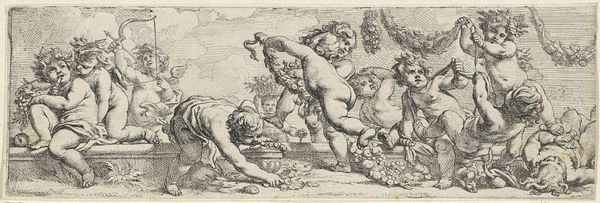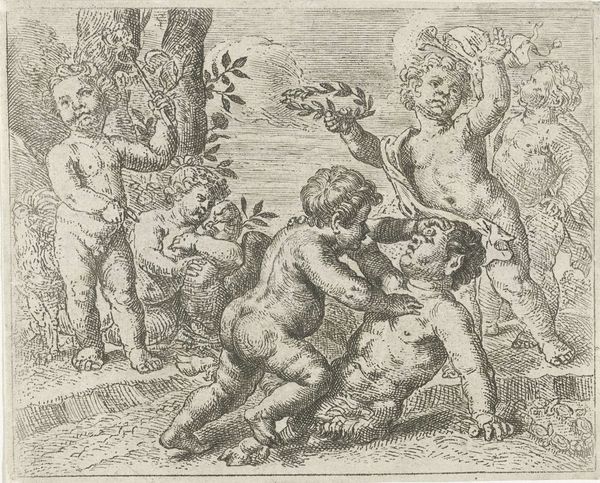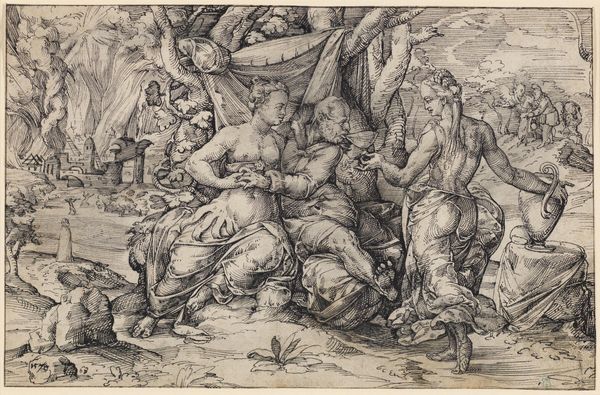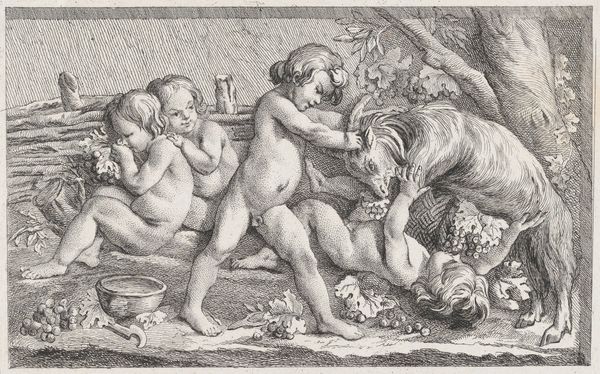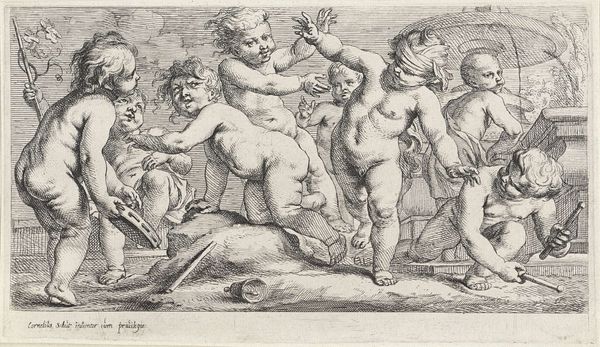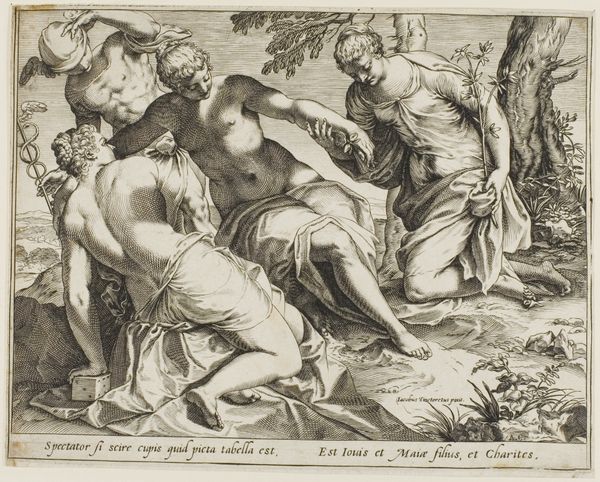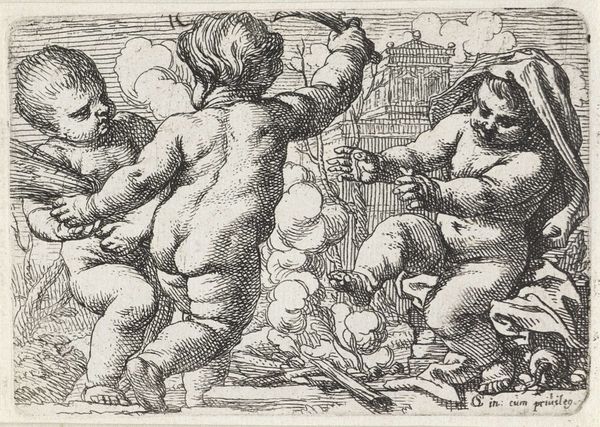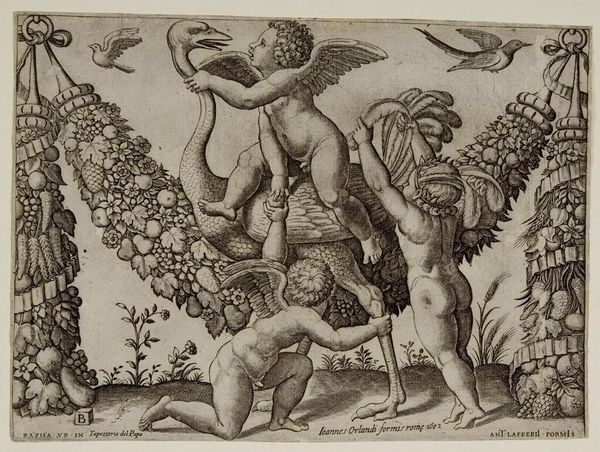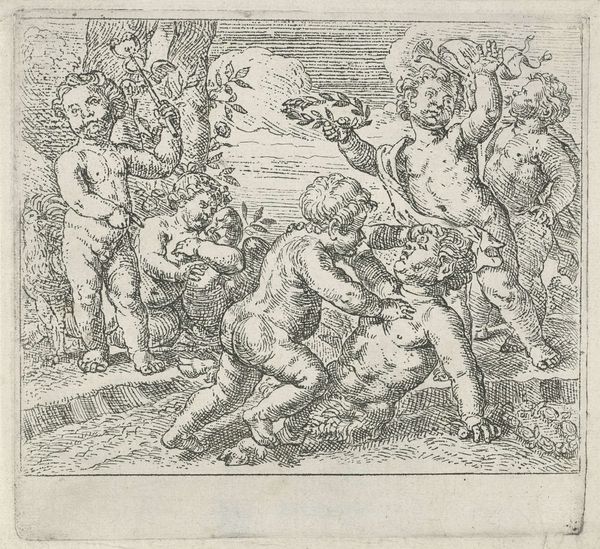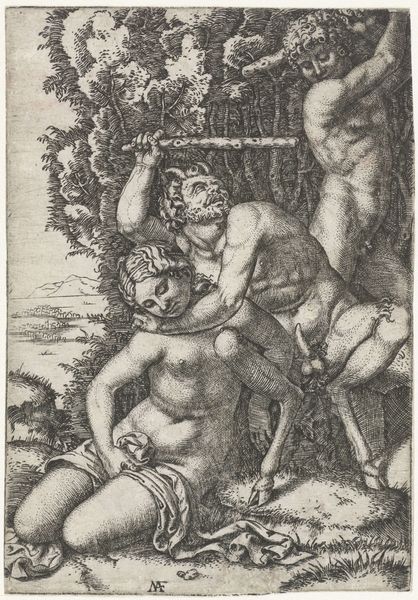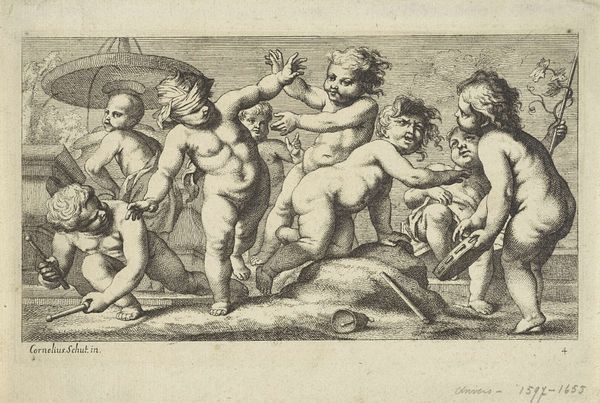
engraving
#
baroque
#
pen drawing
#
figuration
#
genre-painting
#
engraving
Dimensions: height 100 mm, width 330 mm
Copyright: Rijks Museum: Open Domain
This artwork was created by Cornelis Schut in the 17th century, using the etching technique. The term ‘etching’ refers to a printmaking process in which lines are incised into a metal plate with acid. The plate is covered with a waxy ground, upon which the artist draws with a sharp needle. The plate is then immersed in acid, which bites into the exposed lines. After the plate is cleaned, ink is applied and then wiped from the surface, leaving ink only in the etched grooves. Finally, a sheet of paper is laid on the plate, and run through a press. The medium lends itself to delicate details and a wide range of tones, which Schut has exploited to great effect here. Notice the artist's labor in carefully rendering the texture of the cherubic figures and the abundance of fruit. The printmaking process, although skilled, allowed for multiples of the artwork to be produced. This speaks to the rise of a market economy for art in the 17th century, with prints like this one making art more accessible to a wider audience. So, when we look at an etching, we are not only seeing the artist's skill, but also the broader social and economic context in which it was made.
Comments
No comments
Be the first to comment and join the conversation on the ultimate creative platform.
